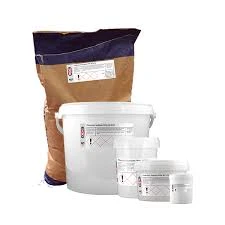
sodium metabisulfite china
An Overview of Sodium Metabisulfite Production and Use in China
Sodium metabisulfite (Na2S2O5), commonly known as sodium bisulfite, is an essential chemical compound widely used across various industries. In China, the production and export of sodium metabisulfite have grown significantly, driven by demand in food processing, water treatment, and the textile industry. This article delves into the production processes, applications, and market trends surrounding sodium metabisulfite in China.
Production Process
In China, sodium metabisulfite is primarily produced through the reaction of sulfur dioxide and sodium carbonate or sodium sulfite. The process begins by generating sulfur dioxide from the burning of elemental sulfur, which is then reacted with an appropriate sodium compound. The resulting sodium bisulfite can further be dehydrated to obtain sodium metabisulfite. This production method is efficient and allows for the scaling of output to meet industrial demands.
Modern production facilities in China utilize advanced technologies to enhance yield and reduce environmental impacts. Many manufacturers have invested in closed-loop systems that minimize sulfur dioxide emissions, adhering to stricter environmental regulations. The adoption of these eco-friendly practices not only helps in compliance but also improves the sustainability profile of the chemical industry in the country.
Applications
Sodium metabisulfite finds extensive applications across multiple sectors. In the food industry, it serves as a preservative and antioxidant, preventing browning in fruits and vegetables and enhancing the shelf life of various products. It is especially popular in the production of dried fruits, wines, and some processed foods, where it helps maintain the quality and freshness of the product.
In addition to food preservation, sodium metabisulfite is widely utilized in water treatment processes. It acts as a dechlorinating agent, effectively removing chlorine from drinking water and wastewater. This role is crucial for creating safe water supplies and meeting health regulations in urban areas.
sodium metabisulfite china

The textile industry also relies on sodium metabisulfite for its bleaching and dyeing processes. It helps in reducing dyes and improves the overall quality of fabrics, making it an indispensable component in textile production.
Market Trends
The market for sodium metabisulfite in China is on an upward trajectory, driven by increasing industrial demands both domestically and internationally. With the country's robust agricultural and food processing sectors, the need for effective preservatives has surged. Moreover, the focus on water quality and environmental sustainability has propelled growth in water treatment applications.
China's leading position as a manufacturer allows it to export sodium metabisulfite to various countries, contributing to the global supply chain. Key markets include Southeast Asia, Europe, and North America, where stringent regulations on food safety and water quality drive demand.
However, the market is not without challenges. Fluctuations in raw material prices, environmental regulations, and competition from other countries can impact production costs and supply capabilities. Manufacturers are increasingly required to balance cost-effectiveness with environmental compliance to stay competitive.
Conclusion
Sodium metabisulfite plays a pivotal role in different industries, and its production in China continues to expand in response to both local and global demands. With advancements in manufacturing processes and a growing emphasis on sustainability, China is well-positioned to remain a key player in the sodium metabisulfite market for years to come. As industries evolve and consumer preferences shift, the versatility of this chemical compound will ensure its continued relevance in various applications.
-
Pure Sodium Dichloroisocyanurate Dihydrate | Powerful DisinfectantNewsAug.29,2025
-
Industrial Chemicals: Quality & Purity for Every IndustryNewsAug.28,2025
-
Nitrile Rubber Honoring Strict Production StandardsNewsAug.22,2025
-
Aspartame Ingredients Honoring Food Safety ValuesNewsAug.22,2025
-
Fertilizer for Balanced Plant NutritionNewsAug.22,2025
-
Cyanide Gold Processing with High Purity AdditivesNewsAug.22,2025
-
Formic Acid in Textile Dyeing ApplicationsNewsAug.22,2025
Hebei Tenger Chemical Technology Co., Ltd. focuses on the chemical industry and is committed to the export service of chemical raw materials.
-

view more DiethanolisopropanolamineIn the ever-growing field of chemical solutions, diethanolisopropanolamine (DEIPA) stands out as a versatile and important compound. Due to its unique chemical structure and properties, DEIPA is of interest to various industries including construction, personal care, and agriculture. -

view more TriisopropanolamineTriisopropanolamine (TIPA) alkanol amine substance, is a kind of alcohol amine compound with amino and alcohol hydroxyl, and because of its molecules contains both amino and hydroxyl. -

view more Tetramethyl Thiuram DisulfideTetramethyl thiuram disulfide, also known as TMTD, is a white to light-yellow powder with a distinct sulfur-like odor. It is soluble in organic solvents such as benzene, acetone, and ethyl acetate, making it highly versatile for use in different formulations. TMTD is known for its excellent vulcanization acceleration properties, which makes it a key ingredient in the production of rubber products. Additionally, it acts as an effective fungicide and bactericide, making it valuable in agricultural applications. Its high purity and stability ensure consistent performance, making it a preferred choice for manufacturers across various industries.





